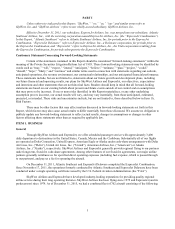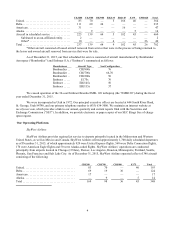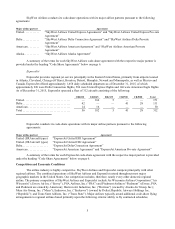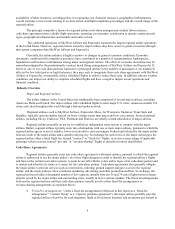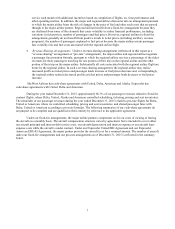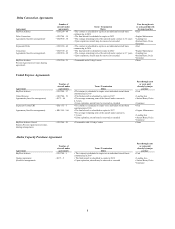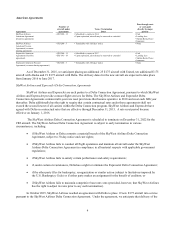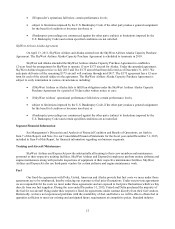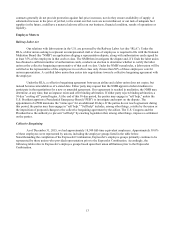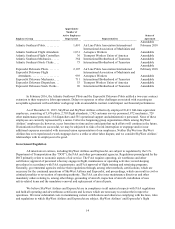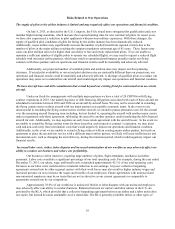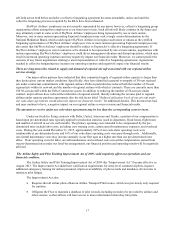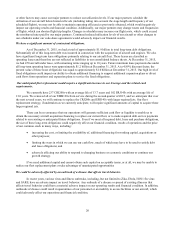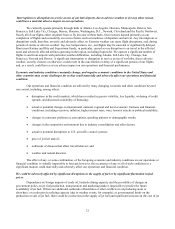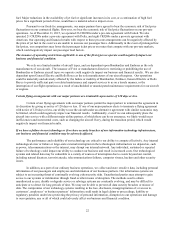SkyWest Airlines 2015 Annual Report Download - page 17
Download and view the complete annual report
Please find page 17 of the 2015 SkyWest Airlines annual report below. You can navigate through the pages in the report by either clicking on the pages listed below, or by using the keyword search tool below to find specific information within the annual report.13
contracts generally do not provide protection against fuel price increases, nor do they ensure availability of supply. A
substantial increase in the price of jet fuel, to the extent our fuel costs are not reimbursed, or our lack of adequate fuel
supplies in the future, could have a material adverse effect on our business, financial condition, results of operations or
liquidity.
Employee Matters
Railway Labor Act
Our relations with labor unions in the U.S. are governed by the Railway Labor Act (the “RLA”). Under the
RLA, a labor union seeking to represent an unrepresented craft or class of employees is required to file with the National
Mediation Board (the “NMB”) an application alleging a representation dispute, along with authorization cards signed by
at least 35% of the employees in that craft or class. The NMB then investigates the dispute and, if it finds the labor union
has obtained a sufficient number of authorization cards, conducts an election to determine whether to certify the labor
union as the collective bargaining representative of that craft or class. Under the NMB’s usual rules, a labor union will be
certified as the representative of the employees in a craft or class only if more than 50% of those employees vote for
union representation. A certified labor union then enters into negotiations toward a collective bargaining agreement with
the employer.
Under the RLA, a collective bargaining agreement between an airline and a labor union does not expire, but
instead becomes amendable as of a stated date. Either party may request that the NMB appoint a federal mediator to
participate in the negotiations for a new or amended agreement. If no agreement is reached in mediation, the NMB may
determine, at any time, that an impasse exists and offer binding arbitration. If either party rejects binding arbitration, a
30-day “cooling off” period begins. At the end of this 30-day period, the parties may engage in “self help,” unless the
U.S. President appoints a Presidential Emergency Board (“PEB”) to investigate and report on the dispute. The
appointment of a PEB maintains the “status quo” for an additional 60 days. If the parties do not reach agreement during
this period, the parties may then engage in “self help.” “Self help” includes, among other things, a strike by the union or
the imposition of proposed changes to the collective bargaining agreement by the airline. The U.S. Congress and the
President have the authority to prevent “self help” by enacting legislation that, among other things, imposes a settlement
on the parties.
Collective Bargaining
As of December 31, 2015, we had approximately 18,300 full-time equivalent employees. Approximately 38.0%
of these employees were represented by unions, including the employee groups listed in the table below.
Notwithstanding the completion of the ExpressJet Combination, ExpressJet’s employee groups primarily continue to be
represented by those unions who provided representation prior to the ExpressJet Combination. Accordingly, the
following table refers to ExpressJet’s employee groups based upon their union affiliations prior to the ExpressJet
Combination.


